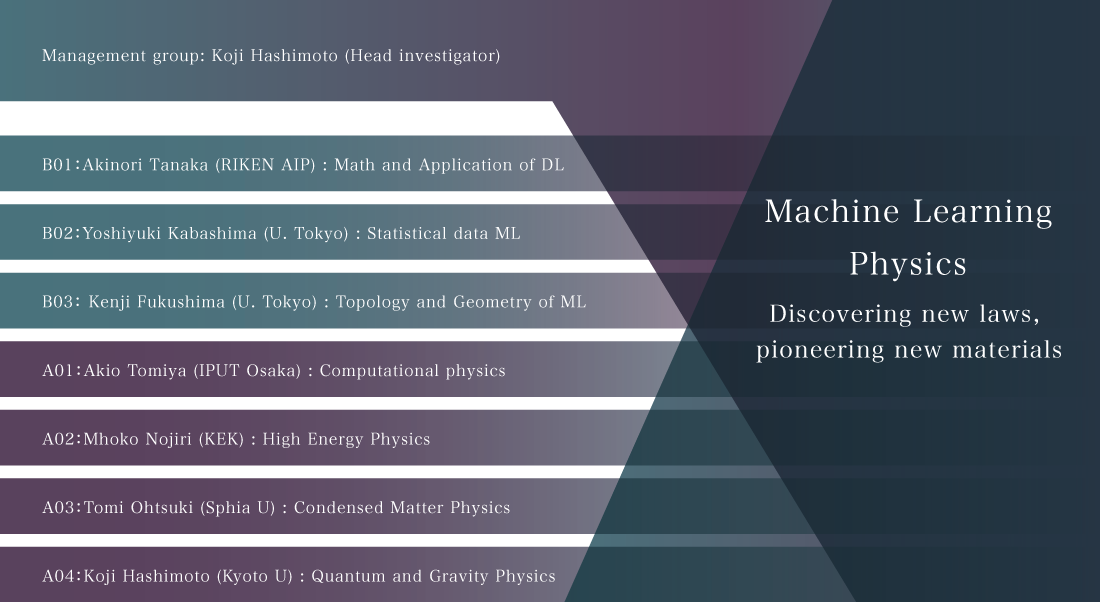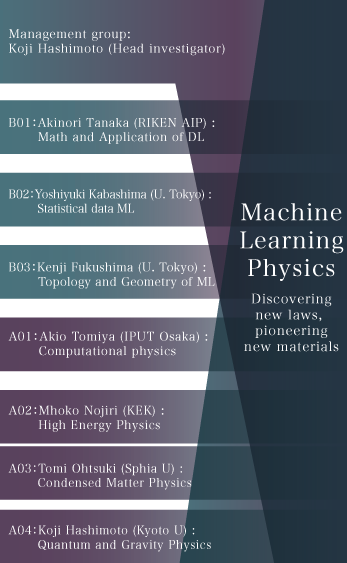

Discovering new laws, pioneering new materials
Solving fundamental problems in physics by integrating theoretical methods in machine learning and in physics
Create intersections in selected physics fields and machine learning methods to promote intersection fusion research and create a common new fundamental area.


| GoalA | |
|---|---|
| By integrating physics and machine learning, we solve fundamental problems in physics | |
| A01 | Innovative acceleration of quantum configuration generation in computational physics. |
| A02 | Improvement of the sensitivity of large accelerator experiments and refinement of corresponding theories in particle physics. |
| A03 | Extension to quantum complex regime in condensed matter physics/ Elucidation of quantum fluctuation and quantum entanglement. |
| A04 | Elucidation of the emergence mechanism of the space-time concept in quantum and gravitational physics. |
| GoalB | |
|---|---|
| Develop methods for solving problems in physics through our new area that takes advantage of the affinity between machine learning and physics. | |
| B01 | Use domain knowledge from physics to mathematically elucidate the mechanisms of deep learning and classify methods to deal with problems. |
| B02 | Overcome the problem of computational difficulty in learning by statistical mechanics/ Develop a framework that runs through theory and practice. |
| B03 | Develop a physics-friendly neural network learning method using topological geometry. |